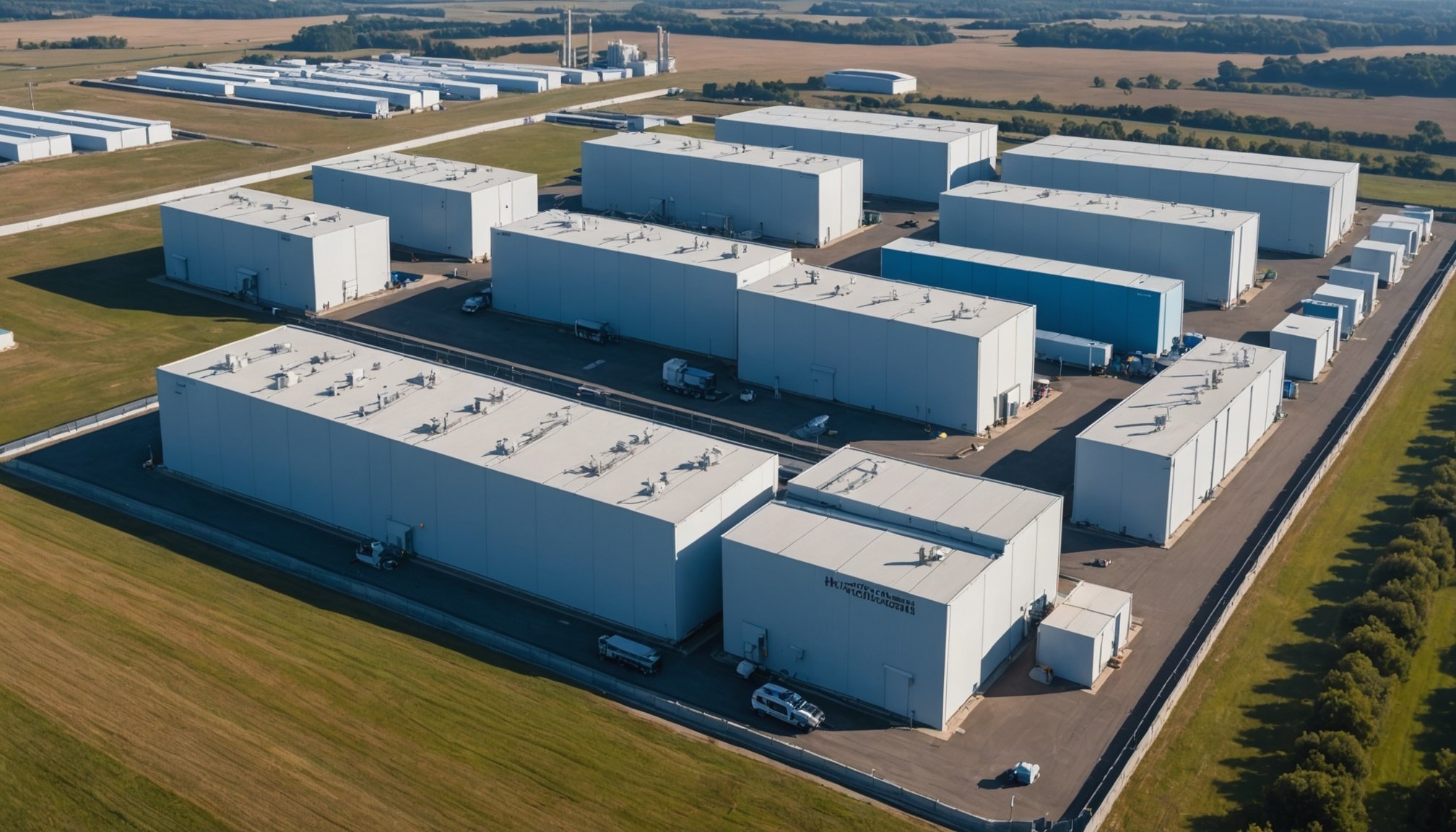Hydrogen’s low density challenges storage design, demanding solutions that balance capacity and safety. Technologies range from high-pressure tanks to advanced materials, each addressing energy density and volume constraints. Innovations driven by rigorous targets aim to enable extended vehicle range and efficient stationary use without compromising safety—transforming how hydrogen powers the future.
Hydrogen Storage Solutions: Meeting Safety and Capacity Needs
To understand the landscape of hydrogen storage, it’s helpful to understand how vallourec provides hydrogen storage solutions as a practical benchmark for safety, capacity, and flexibility in large-scale applications. Hydrogen, valued for its exceptionally high energy per unit mass, must overcome its low volumetric density—a challenge at the core of storage technologies across sectors. Three main approaches dominate the field: compressed hydrogen storage, cryogenic liquid storage, and solid materials-based storage.
Also read : How Can UK Businesses Adapt to Sustainably Boost Their Growth?
Compressed gas storage, the leading near-term method, utilizes fiber-reinforced composite tanks operating at up to 700 bar. These tanks, though bulky, are vital for achieving the driving range expected of fuel cell vehicles. Cryogenic liquid storage is more energy-dense but requires hydrogen to be kept at -253°C in specialized insulated tanks, often used in aerospace or industrial supply chains.
Innovative materials-based solutions are gaining traction, notably metal hydrides and advanced sorbents. These enable compact, loss-free storage, offering reliable energy for off-grid power, backup systems, and industrial applications. Optimization aims for efficiency—some designs now reach over 97% yield and can dispense hydrogen at pressures from 7 to 35 bar, compatible with a broad array of end-uses.
Also to read : How Do UK Businesses Navigate Post-Brexit Challenges?
Safety remains a fundamental concern. Systems employ rigorous leak detection, embrittlement-resistant vessels, and integrated thermal management. These measures address hydrogen’s flammability and the technical challenges of maintaining container integrity across repeated pressure and temperature cycles. Storage solutions are now designed for modularity, with footprints much smaller than traditional high-pressure tanks, and installation has become increasingly straightforward, reducing deployment lead times.
This focus on scalability, flexibility, and operational safety is central not just for stationary and industrial hydrogen storage, but also as a foundation for integrating hydrogen into future-ready mobility, microgrids, and renewable energy frameworks.
Key Hydrogen Storage Methods and Technologies
Compressed hydrogen storage remains the most widespread method, especially for transportation applications. High-pressure hydrogen tanks, constructed from advanced hydrogen storage materials, enable storing hydrogen gas at up to 700 bar. This technique maxes out volumetric energy density but introduces notable hydrogen storage safety measures due to high pressures. Hydrogen storage challenges persist around weight, size, and hydrogen storage cost analysis, particularly for compact vehicles. Still, compressed hydrogen storage is essential for fueling stations, industrial use, and hydrogen storage for fuel cells in light-duty vehicles.
Cryogenic hydrogen storage cools hydrogen to -253°C, transforming it into a liquid and packing more hydrogen into a smaller volume. Cryogenic hydrogen storage achieves higher volumetric energy density than compressed hydrogen storage but comes with technical hurdles—evaporation losses, complex insulation, and stringent hydrogen storage safety measures. Its use is typical in aerospace and bulk transport, where hydrogen storage capacity optimization outweighs the high operational costs and cryogenic hydrogen storage complexity. These tanks are rare in daily transport due to their cost, but they serve an important role in large-scale energy storage using hydrogen.
Emerging options such as metal hydride hydrogen storage and solid-state hydrogen storage offer compact, efficient alternatives. Metal hydride hydrogen storage utilizes alloys that chemically store hydrogen, supporting safer and denser stationary hydrogen energy storage methods. Solid-state hydrogen storage and materials like liquid organic hydrogen carriers are under active research as innovative hydrogen storage techniques, targeting more practical and scalable hydrogen storage technologies overview for the future.
Innovations and Developments in Hydrogen Storage
Recent advancements in storage materials and container design
Recent hydrogen storage advancements focus on new materials and systems that maximize hydrogen storage efficiency. For hydrogen storage for fuel cells and hydrogen storage for transportation, compactness and rapid refueling are critical. Developers are leveraging innovative hydrogen storage techniques such as solid-state sorbents, cryogenic tanks, and metal hydride hydrogen storage. These hydrogen storage materials—including advanced composites and metal alloys—allow improved containment at higher pressures and/or lower temperatures, enabling higher volumetric and gravimetric densities while maintaining low system weight. Continued research into these hydrogen storage technologies overview highlights efforts to balance safety, energy density, and cost.
Technology demonstrators: large-scale, safe hydrogen storage
Technology demonstrators like Delphy showcase the potential of innovative hydrogen storage techniques on an industrial scale. Delphy’s validated design provides high-capacity, scalable solutions for storing hydrogen gas, emphasizing robust hydrogen storage safety measures and minimal surface footprint. These systems utilize compressed hydrogen storage in engineered vessels, rigorously tested for leak prevention and durability under pressure cycling—directly supporting both hydrogen storage for fuel cells and grid-scale applications.
Application-focused innovation: mobility, fuel cells, and scalable industrial solutions
Cutting-edge hydrogen storage advancements are closely linked to targeted applications, especially in energy storage using hydrogen for off-grid and renewable integration. For example, the modularity and high efficiency of some systems address hydrogen storage challenges in transportation, ensuring vehicles can meet range and refueling needs. Simultaneously, hydrogen storage for transportation and stationary sites maximizes energy storage using hydrogen while facilitating rapid deployment and integration with green energy infrastructures.
Safety, Standards, and Regulatory Frameworks
Risk factors: flammability, leakage, and embrittlement issues
Hydrogen storage safety measures are dictated by hydrogen’s characteristics. Its flammability in air increases risks of ignition, especially near hydrogen storage systems or transport equipment. Leakage remains a frequent concern: hydrogen storage leak detection is mandatory due to the gas’s low molecular weight and tendency to escape through minute imperfections. Extended contact with metals can cause embrittlement, weakening tanks or piping in hydrogen storage facility design. Addressing these risk factors requires robust hydrogen storage safety standards to minimise potential harm.
Current standards, certifications, and regulatory efforts for hydrogen storage
Agencies develop and update hydrogen storage safety standards encompassing hydrogen fuel storage safety protocols, facility design, and operational management. These protocols require certified tanks, regular hydrogen storage leak detection, and compliance with pressure regulations. International organisations and national authorities have introduced detailed guidelines around hydrogen storage facility design to anticipate diverse operational scenarios—ranging from high-pressure tanks for vehicles to underground storage installations. These rules are evolving, with hydrogen storage safety measures being increasingly scrutinised to support public acceptance in 2025 and beyond.
Monitoring and real-time safety management in modern systems
Effective hydrogen storage systems now incorporate real-time hydrogen storage leak detection, digital monitoring, and automated risk management features. Sensors detect early-stage hydrogen leaks, enable corrective action, and contribute to continuous hydrogen fuel storage safety protocols. Data-driven monitoring systems advance hydrogen storage safety measures by alerting operators instantly, supporting rapid response, and reinforcing hydrogen storage safety standards within any well-designed hydrogen storage facility.
Storage Challenges, Cost Considerations, and Future Outlook
Volumetric energy density and storage space constraints
Hydrogen storage challenges start with hydrogen’s low volumetric energy density, making efficient hydrogen storage systems difficult for mobile and stationary uses. Although hydrogen boasts a high energy storage by mass, the inherent space required for adequate hydrogen storage capacity optimization presents major issues, especially in light-duty vehicles and for grid balancing. The difference between hydrogen’s energy density per litre (8 MJ/L in liquid form) and that of gasoline (32 MJ/L) means engineers must use large or high-pressure tanks, complicating hydrogen storage for transportation and making on-site or off-grid power supply with hydrogen a design puzzle. These constraints require ongoing research into advanced materials and optimized hydrogen storage tank designs.
Cost factors: materials, installation, operation, and lifecycle
A complete hydrogen storage cost analysis highlights expenses across the hydrogen storage lifecycle—including material selection, manufacturing of high-pressure or cryogenic tanks, and operational safety measures. Advanced materials and innovative hydrogen storage technologies can reduce the footprint but often carry higher upfront costs. Installations such as metal hydride hydrogen storage improve operational safety and efficiency but must be weighed against system durability and lifecycle costs. Market trends indicate that as hydrogen storage for grid balancing grows, economies of scale may lower costs, especially with modular hydrogen storage solutions for both industrial and mobile uses.
Integrating hydrogen storage with renewables and forecasting future trends
Hydrogen storage for grid balancing is essential in integrating variable renewable energy sources. Energy storage using hydrogen converts excess renewable power into hydrogen, optimizing grid resilience and helping decarbonize hard-to-electrify sectors. The future of hydrogen storage includes next-generation hydrogen storage technologies such as modular underground storage, reversible hydrogen absorption, and digital hydrogen storage monitoring systems. Such approaches will be key to managing hydrogen storage challenges while minimizing risk and supporting widespread renewable hydrogen deployment through 2025 and beyond.




